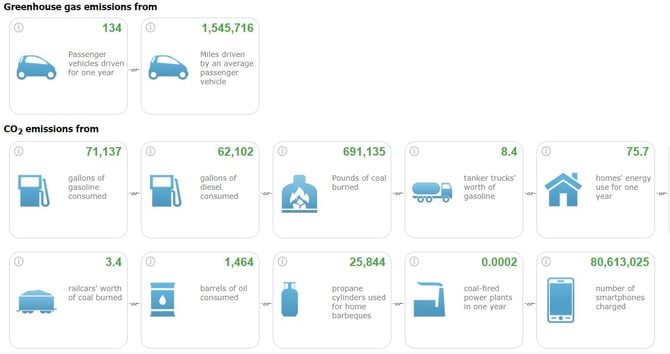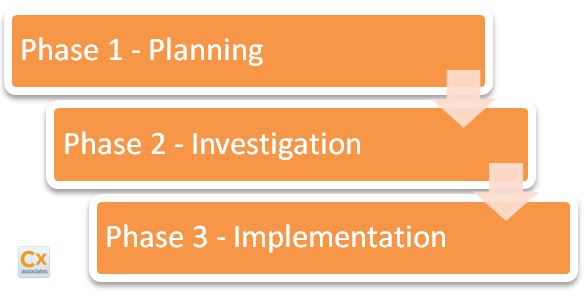As someone very new to the engineering world, I’ve learned a lot in the last few months about the impact that engineers can have on climate change. I came to Cx Associates and the world of commissioning in a rather round-about way. My background is in molecular genetics, specifically lung cancer research, but when I moved to Burlington this past summer, I decided to pivot in my career path. I’d found myself desiring more and more to move into a field that was doing some good for the world. I know, I know, many would say “Hey! Cancer research is good for the world!,” and I certainly don’t deny that, but what good is finding new cancer treatments if there isn’t a planet that can viably support the patients those treatments would be for? As I’m sure many of you heard or read in the news some months ago, the Intergovernmental Panel on Climate Change (IPCC)’s 2018 Climate Report showed that “global warming is likely to reach 1.5°C between 2030 and 2052 if it continues to increase at the current rate” (something some climate scientists have argued is a conservative estimate). This will have devastating effects on people’s lives, and not only in poorer nations of the world – the Fourth National Climate Assessment released by the U.S. Global Change Research Program in November 2018 predicts U.S. economic losses due to climate change in 2090 as $280-$500 billion/year. These reports cemented my feelings in the weeks and months after I began at CxA, but I had already felt myself pulled towards the idea of working for a company or organization that was doing solid, on the ground work to combat climate change. I did not expect that pull to land me at a consulting engineering firm.

Buildings and Greenhouse Gases
Did you know that buildings and the electricity/heat production to power those buildings are responsible for over 30% of global greenhouse gas (GHG) emissions (as of 2014)? Did you also know that as of 2012, about half of all commercial buildings in the United States were constructed before 1980, nearly ten years before the idea of climate change first became major news? With such a large portion of the building stock still existing from before anyone cared or even knew about the effects low efficiency buildings would have on the planet, engineers who know how to take that building stock and bring it up to date are more important than ever. I’d always known that buildings have an effect on GHG emissions, but had never thought about what industries may exist that were actually making a viable difference. Cue my journey to Cx Associates.
Bringing 20th Century Building Stock Up to 21st Century Standards
My time so far at Cx Associates (about 6 months) has opened my eyes to the power of engineering in the fight against climate change. I’m not advocating we forgo the efforts being made to change climate action policy, but without a major shift in policy that dictates the demolition of existing buildings in exchange for net zero or carbon negative new construction, it’s up to people like those who work here to find creative solutions to make buildings that exist or that are being newly built as efficient as possible. By optimizing equipment and their corresponding systems in buildings, we can reduce GHG emissions. Take, for example, an update to occupancy schedules for supply air VAV boxes we provided at the University of Vermont Medical Center Ambulatory Care Center (UVMMC ACC). By revising the sequence of operations on ~50% of them to go into unoccupied mode when not in use, we were able to not only save energy in the VAV boxes themselves, but the corresponding Air Handling Unit fan as well.
Saving Energy for the Planet and the Bottom Line

Some building owners may worry more about bottom line than about climate change, but the benefits of energy efficiency extend to monetary savings. If a measure were implemented to save just 100 kWh/year (which is nearly nothing considering the average American household consumes 867kWh/month), which comes out to about $12.50/year, it would save 156 pounds of CO2, equivalent to the amount of GHGs released by a car driving 173 miles. Increase this to the kWh we can save building owners through measures implemented, and a picture begins to form of how widespread implementation of building system optimization can actually make a splash in the bucket of U.S. energy consumption. If, for example, you take the UVMMC ACC project I outlined, the results speak for themselves – we verified annual savings of the equivalent of 894,007 kWh, saving the customer about $111,750/year ($154,300 if using New England electricity costs), equivalent to driving a passenger vehicle 1.55 million miles.

If you are interested in learning more about U.S. energy consumption, there is some fantastic data to be mined from the U.S. Energy Information Administration. If you’d like to find out more about the GHGs produced by your building, check out this Greenhouse Gas Equivalencies Calculator. If those things inspire you to take on some energy efficiency projects, you know where to find us.


